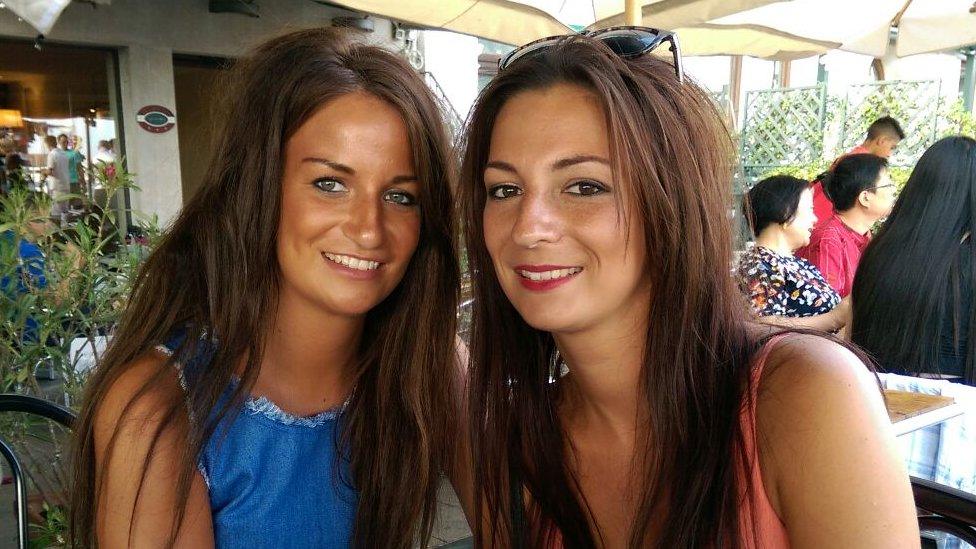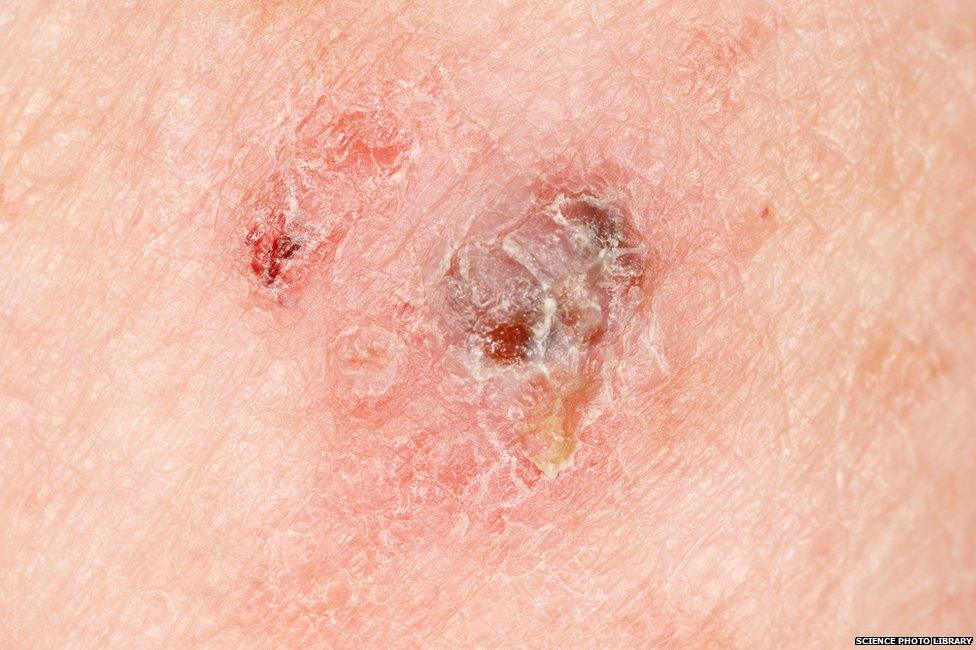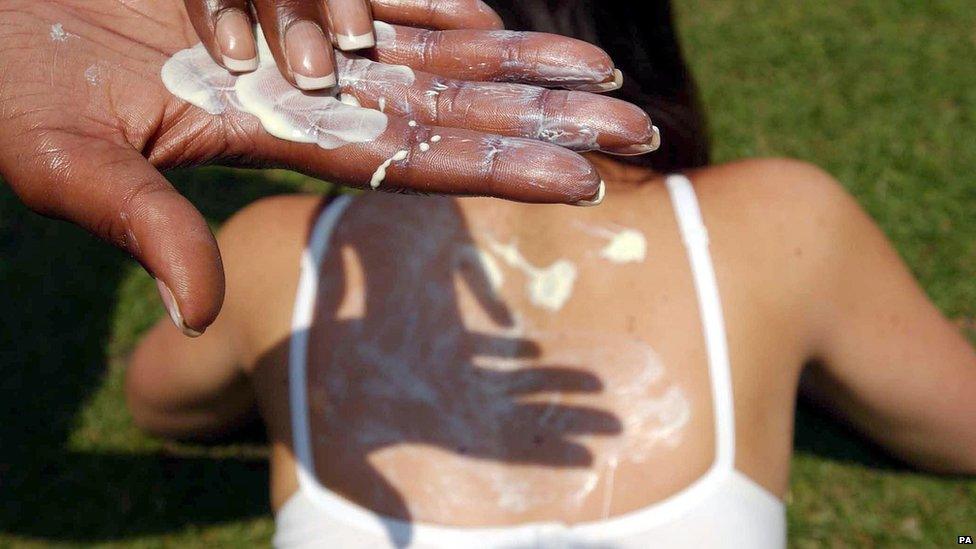Katie's story: Sunscreen could have stopped me getting skin cancer
- Published

Katie (L) on holiday with her sister shortly before her diagnosis
Katie Miller isn't what you'd call a "sun worshipper". She doesn't spend days on the beach or use tanning booths.
But when she was diagnosed with skin cancer last year, doctors blamed it on sun exposure.
"It was terrifying, and it all happened quite quickly," says the 25-year-old.
"I'd just got back from a holiday with my sister and it was only about six days after I got back that I was in hospital and having my operation."
Like Katie, almost two thirds of people aged 13 to 24 have avoided using sunscreen, external to try to get a better tan, according to the Teenage Cancer Trust.
"I noticed a spot had appeared on my leg, something that hadn't been there before.

Melanomas often have an irregular shape and are a mix of colours
"And over a few months it got bigger and darker, so I decided to go to the doctors to get it checked and they referred me to the hospital.
"Unfortunately in September last year I found out it was malignant melanoma," explains the secondary school teacher.
Katie had the mole removed, and since then the cancer hasn't reappeared. But not everyone's so lucky.

Skin cancer is the second most common, external cancer among 15 to 34-year-olds.
More than two people in this age group are diagnosed every day, external in the UK, according to Cancer Research UK.
Katie says she didn't spend a lot of time in the sun, but skimped on the sunscreen because she thought it'd stop her getting bronzed.
"I was led to believe, through my own imagination really, that putting sun cream on wouldn't get me as good of a tan.

"But I've now realised that isn't the case and you can get a tan while still protecting yourself with sun cream."
Experts recommend applying sunscreen 30 minutes before you go out in the sun, and reapplying every two hours.
"It's not just using sunscreen but it's using it in the right way," explains Dr Nisith Sheth from the British Skin Foundation.
"The vast majority of people never use enough."

With most branded sunscreens costing over £10 a bottle, Nisith thinks cost is another factor putting people off.
But he says most products contain the same ingredients, regardless of price.
"The thing you should be looking for is the sun protection factor and the star rating," he explains.
You can find these on the front of every bottle - the higher the rating, the better protection it offers from harmful UVA and UVB rays.
Find us on Instagram at BBCNewsbeat, external and follow us on Snapchat, search for bbc_newsbeat